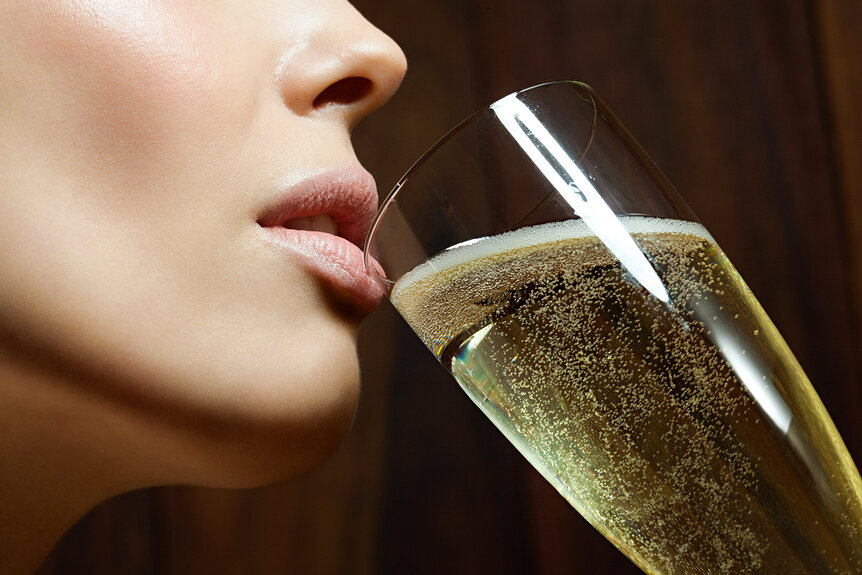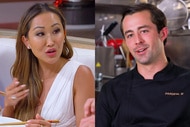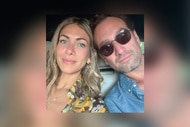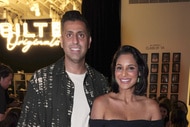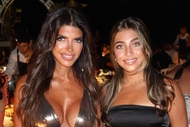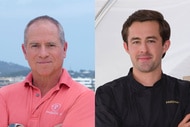
Create a free profile to get unlimited access to exclusive videos, sweepstakes, and more!
10 Truly Fascinating Facts You Didn’t Know About Champagne
Cheers to your new cocktail party trivia!

Chances are you’ll see more than one passing glass of Champagne at your New Year’s Eve soiree, but before you grab a flute of the ubiquitous celebratory stuff, here are 10 facts to know about that beautiful bubbly...including that what you’re drinking may very well not be Champagne at all! (Womp womp.)
1. People use the word Champagne loosely.
And by loosely, we mean wrong. While all Champagne is sparkling wine, not all sparkling wine is Champagne. To be legally called Champagne, the wine must come from France’s Champagne region. On top of that, there are other protocols that must be adhered to as part of the production process in order to be designated as Champagne... which is probably why you never see a $5 bargain bottle of the stuff.
2. One glass has a LOT of bubbles.
Like hundreds a lot? Thousands? Try one million bubbles per glass! For years, people threw around the figure 15 million until a scientist behind the study in the American Chemical Society’s The Journal of Physical Chemistry discovered that that figure wasn’t accounting for the loss of the dissolved carbon dioxide that escapes from the glass without forming bubbles. Oh, Champagne science... our favorite kind.
3. There are more red grapes than white grapes in Champagne.
Despite the fact most Champagnes are white in color, they are typically made up of a blend that includes around two-thirds red wine grapes of Pinot Noir and Pinot Meunier and one-third white Chardonnay grapes, though blends can vary and also include other varieties, too. As for how the color remains white, the pressing process doesn’t allow the skin to come in contact with the juice and, thus, no color is imparted. In the case of those pretty pink rosé Champagnes, the winemaker either allows some skin contact for a short time or blends a bit of red wine in.
4. You can serve 120 people with one (very big) bottle.
You’ve probably heard of a magnum, which is the equivalent of two bottles, but things get much bigger... and climb all the way up to a Nebuchadnezzar, the equivalent of 20 bottles, 15,000 milliliters, or about 120 glasses. Interested? You can buy a Nebuchadnezzar of Veuve Clicquot online for just over $2,000.
5. Jay-Z owns a Champagne brand.
When we find a Champagne we really like, we buy a bottle or two. When Jay-Z finds a Champagne he really likes, he buys the company. In 2014, Beyonce’s better half purchased Armand de Brignac Champagne from Sovereign Brands. Jay-Z had been a vocal fan of the Champagne — nicknamed Ace of Spades for its logo — and once had a tower of 350 bottles of the stuff on display at a fundraiser for President Obama. A typical bottle retails for around $300, but last April the mogul created a limited-release of A2 blend that costs a cool $800 a pop.
6. Someone out there can saber a bottle a second.
Sabering — the traditional technique of slicing off the neck of a bottle with a sword — is a pretty cool party trick to have in your back pocket. And while it takes some trial and error for the average person, a saber pro named Ashrita Furma sabered 66 bottles in one minute in 2015 and now holds the Guinness World Record for the feat.
7. A very fancy person once commissioned a $1.8-million bottle of bubbly.
Luxury Champagne maker Goût de Diamants created a baller bottle in 2013 that included an 18-carat gold logo anchored by a 19-carat flawless diamond along with the engraved name of the “unnamed private client” who requested it.
8. Moet & Chandon sells more bottles than any other brand.
The well-known Champagne label put out by the luxe LVMH group sells a mind-boggling 30 million bottles a year worldwide, according to Drinks Business. Clearly, everyone’s uncertainty about how to pronounce it isn’t hurting sales.
9. 168 bottles of Champagne were recovered from a 19th century shipwreck... and were totally drinkable.
In 2010, divers checking out a shipwreck in the Baltic Sea stumbled upon 14 dozen bottles of bubbly with cork engravings that suggested they were produced by a French Champagne house. Since the wine had been in a cool, dark atmosphere 160-feet below the sea all those years, it was actually the perfect scenario for proper aging. A French professor who led an analysis of the Champagne said he was surprised at how similar the composition was to modern Champagne other than the fact it had a ton more sugar content.
10. Champagne is good for your memory.
In 2013, scientists at the University of Reading found that drinking one to three glasses of Champagne a week could counteract the aging-related memory loss associated and potentially delay the onset of degenerative brain disorders like dementia. And that’s one Champagne fact we promise not to forget.
